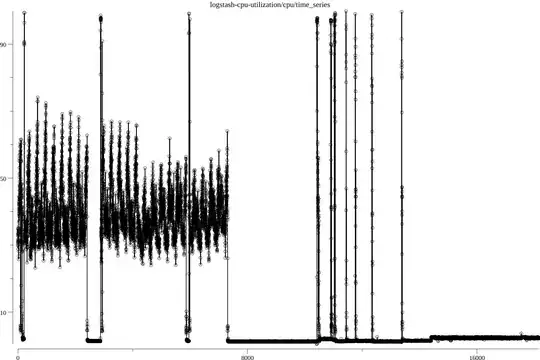In order to be as responsive as possible to the applied scenario of interest to you, I am going to frame my analysis in terms of data objects that take on a random hash value, so that objects with the same hash value give hash collisions. The analysis is no different if you use balls/bins instead of data objects/hash values, so please interpret with whatever applied context you wish.
Your problem here involves an analysis of the maximum count from a uniform-multinomial distribution; it can be framed mathematically as follows. Let $X_1,...,X_n \sim \text{IID U} \{ 1,...,d \}$ be a set of $n$ uniform draws from $d$ hash values. Define the count values $N_r = \sum_{i=1}^n \mathbb{I}(X_i = r)$ for each hash value and observe that the count vector has a uniform-multinomial distribution:
$$\mathbf{N} = (N_1,...,N_d) \sim \text{Mu} \Big( n, (\tfrac{1}{d},...,\tfrac{1}{d}) \Big).$$
Define the largest count over a single hash value as $M_n \equiv \max (N_1,...,N_d)$. You are looking for the largest value $m$ such that $\mathbb{P}(M_n \geqslant m) \geqslant 0.5$, which is a quantile of the distribution of $M_n$.
Unfortunately, the distribution of the uniform-multinomial maximum-count is a complicated distribution that does not have a simple closed form. An iterative method for computing the distribution of the maximum is examined in Bonetti, Cirillo and Ogay (2019) (pp. 6-7).
It is programmed in R in the occupancy package using standard syntax for probability functions (see related question here). Here I will give an example with $n=20$ and $d = 6$, but you can alter these numbers if you prefer.
#Set the parameters
n <- 20
d <- 6
#Compute and plot the cumulative probabilities from the MaxCount distribution
library(occupancy)
CUMPROBS <- pmaxcount(0:n, size = n, space = d)
names(CUMPROBS ) <- sprintf('M[%s]', 0:n)
plot(0:n, CUMPROBS, col = 'blue', pch = 20, cex = 1.5,
xlab = 'Maximum Count', ylab = 'Cumulative Probability')
abline(a = 0.5, b = 0, lty = 2, lwd = 2)
#Compute quantile
QUANT <- qmaxcount(0.5, size = n, space = d)
QUANT
[1] 6

In order to get $\mathbb{P}(M_n \geqslant m) \geqslant 0.5$ we can solve the equivalent problem $\mathbb{P}(M_n \leqslant m-1) \leqslant 0.5$. As you can see from the above plot of the cumulative distribution function, the largest value of $m$ that satisfies this requirement is $m=6$. In other words, if we have $n=20$ pieces of data distributed randomly over $d=6$ distinct hash values, there is at least a 50% chance that the maximum number of pieces of data with the same hash is at least six.

